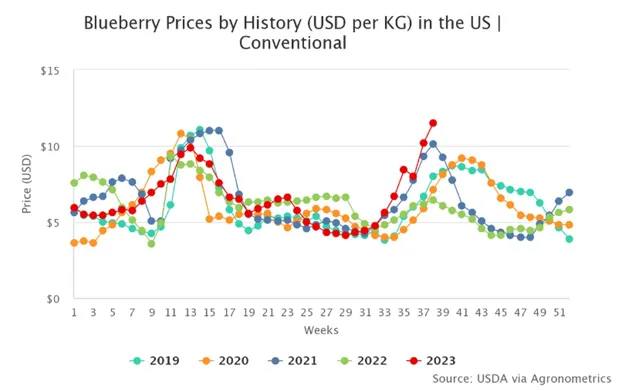High temperatures caused by the El Niño phenomenon are suffocating the supply of Peruvian blueberries. Abnormally high temperatures in Peru's producing regions have delayed production by 5 to 6 weeks, causing a huge supply shortfall.
Alfredo Lira Chirif, general manager of Agrícola Cerro Prieto: “The volume drop for the 2023/2024 season will be much greater than the 10% or 15% that Proarándanos predicts; the fall will be around 30% or 35% by volume, depending on how it develops until December. I believe that what some agribusiness companies are going to do is extend the campaign until January, February and March, taking advantage of this last cold period that we have left. “In this way they will try to enter the Chilean window, which ends in April.”
Given that Peru has established itself as the predominant supplier to the United States, the significant drop in production this year has important repercussions. The US is expected to be left without real supply until at least week 41. Afterwards, the supply chain is expected to gradually improve. Blueberry production in the Pacific Northwest and Michigan has already concluded, while imports from South America remain sporadic and unpredictable.

Despite the significant reduction in supply, the prevailing shortage is mainly due to package size. Over the years, the industry has evolved toward larger package sizes, with 18 oz. shells becoming the standard, compared to 10 to 15 years ago, when 4,4 oz. shells became the standard.
Source: blueberriesconsulting.com
